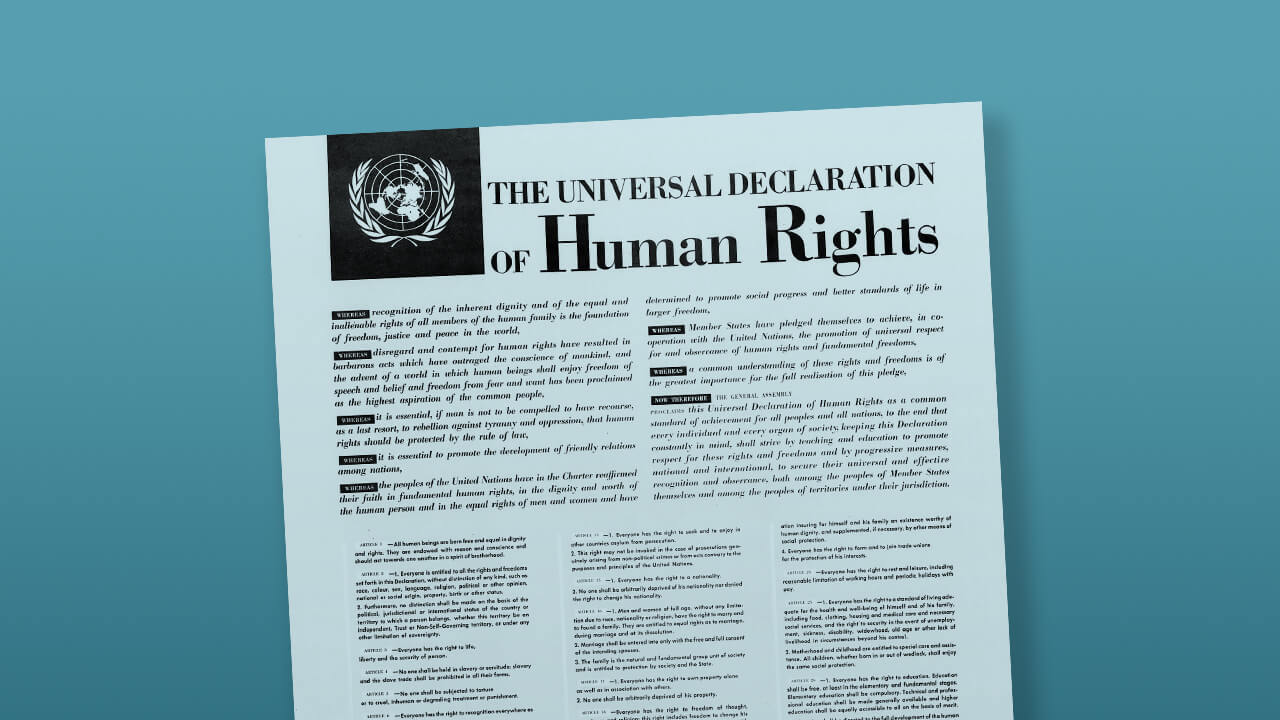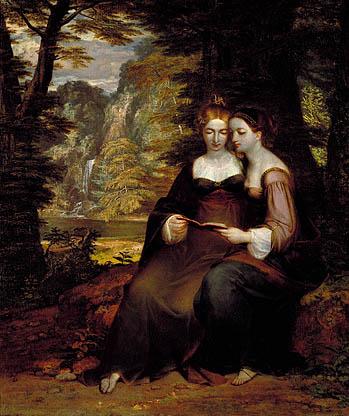What is a Person? Understanding Dignity in the Universal Declaration of Human Rights

The phrase inherent human dignity refers to the value of being a person. So we must ask: What is a person?
Sometimes, nowadays, we hear impassioned assertions that it is unreasonably anthropocentric to ascribe personhood only to human beings—that animals, too, should be considered persons; even plants. Maybe the earth itself: Gaia.
These arguments emerge, in part, from two convictions: 1) that “personhood” should be ascribed to any being that is sentient in any way or degree; and 2) from recognition that all “beings” are interconnected.
To the first point. To describe any concrete manifestation of sentience at any level of ontological development or complexity (e.g., a blade of grass; an oyster; a cat) as a “person” is —however nobly motivated—wildly wrongheaded, in that it ignores the results of thousands of years of efforts to understand human distinctiveness based on the full range of available data on human beings.
Second: to argue for the importance of recognizing the ontological involvement of all beings with each other—on a bioregional, planetary, or universal scale—is of itself no more than a reminder of the oneness of the cosmos, which indeed we would always do well to remember.
But we also need to remember, when reflecting on the oneness of the cosmos, that each identifiable thing is both one with everything else that is, and distinct from it. (Hegel referred to this metaphysical both/and-ness with the phrase “the identity of identity and difference”).
Distinguishing what it is that makes a type of thing just what it is, is the foundation of both philosophy and science. Rocks are not plants; plants are not animals; and humans are (though it sounds odd to modern ears) distinct not only from minerals and plants, but also from animals.
Animal being is obviously the foundation of humanness. But in human beings, the general range of capacities belonging to the sensitive psyche of higher animals (along with necessary biological foundations) are brought into a higher functional integration (i.e., are depended upon, but guided beyond the scope of their intrinsic capabilities) through the operations of human consciousness—operations whose presence as potential or as active make us human.
The idea of “person” is an important element in the philosophical exposition of this fact: that the absorption of animality into a higher unifying ontological sphere of cognitive, moral, and spiritual purposiveness makes humans not just another “species of animal,” but a distinct genus of being: a distinct kind of “unity-identity-whole” (to use Bernard Lonergan’s language).
One characteristic of this “higher ontological sphere” constituted by human conscious operations is awareness of being a limited participation in the ground of being; the ground that—when adequately understood—is recognized to be a space-and-time-transcending reality. Human consciousness, then, as a “person,” is where transcendent reality reveals itself both to itself and to other persons. Or: a “person” is where an awareness of simultaneous identity with and difference from everything else, is also aware of being a participation in and openness to transcendence.
What are the conscious operations that belong specifically to persons?
Foundationally, they include: self-aware (self-present) inquiry in relation to sensations, imaginings, and feelings; acts of conceptual understanding, knowing, and creating; free deciding and acting in the service of self-choosing; and conscious and intentional loving.
The “human” result is conscious human performance, the “operating” of personhood, which displays certain well-known attributes: for example, the awareness of responsibility that accompanies awareness of freedom; and, through awareness of being the responsible creator of an original personal identity, awareness of being unique and irreplaceable.
Accompanying this conscious performative artistry is also an awareness of our capacity to suffer (physically and spiritually), and of all the vulnerabilities of personhood: we recognize how easily our freedom to make or define ourselves is undermined, both by ourselves and by others; how often our desire to perform admirably in the drama of our lives is thwarted by our own misconceptions and egoism, as well as by the actions of others; and how our desire to understand and to love (and to be understood and be loved) so often goes unmet.
The value of personhood as above described constitutes (more or less) the value of inherent human dignity affirmed in the Universal Declaration (with no epistemological or metaphysical details there expressed, of course).
And human rights derive from this inherent value: it is because humans are capable of the operations involved in responsible self-making, and are unique and vulnerable beings, that we have an “inalienable right” to the conditions and opportunities that allow for our free and full development as persons—that is, that allow for the pursuit of dignified living.
What “rights” secure the pursuit of dignified living?
Civil and political rights, such as the rights to liberty, privacy, equality before the law; freedom from discrimination based on race, color, language, nationality, sex, property, birth, or religion; freedom of movement, freedom to marry and form a family, and to own property; freedom of thought, expression, and practice of religion; and freedom of peaceful assembly and association.
Also, economic and cultural rights, such as the right to education; the right to work; the right to equal pay for equal work; the right to a standard of living adequate for proper health care; the right to rest and leisure; the right to participate in cultural life; and the right to share in the benefits of scientific advance. And so on.
To sum up: the rights enumerated in the Declaration are precisely—in its words—those that are “indispensable for [a person’s] dignity and the free development of his personality.”
(Also indispensable, states the UDHR, is the acceptance of certain obligations: for since persons can flourish only if their rights are respected, each of us has “duties to the community” entailing “due recognition and respect for the rights and freedoms of others.” Thus a conscientious embrace of social obligations is also essential to “dignified living.”)
So much for the notion of “achieved dignity”—a notion the Declaration necessarily presents only heuristically, since the actualized particulars of the dignified existence of any person will be constituted by the ongoing questioning, insights, and self-defining decisions and actions made by an individual within specific situations involving a multitude of social, economic, technological, and cultural conditions.
Now, what happens to inherent dignity if someone chooses to live in a ruinously undignified way? Nothing. The failure to achieve dignity doesn’t alter one’s intrinsic human value. Inherent human dignity is “inalienable,” “inviolable”: it can’t be destroyed by any means, not by others, nor by ourselves in our indifference, self-disgust, or despair.
It remains present, too, in victims of torture or terrorism, even if it produces a profound sense of self-humiliation, a state of being reduced in one’s own eyes to something less than human.
It remains in persons who do evil by choice or by derangement. It is a characteristic “of criminals as well as of saints” (Ken Melchin). Admirable accomplishment and useful social function do not improve it; disastrous psychological conditions do not diminish it.
And in the view of the UDHR, every person is equal in this unshakeable inherent dignity.
What an idea! The most harmful persons in the world are equal in basic human value to those who might be called saints. Each of them is infinitely valuable.
This is an idea that makes no sense, of course, unless each human being actually is a participation in —and a transparency for—the infinite value of transcendent presence.




